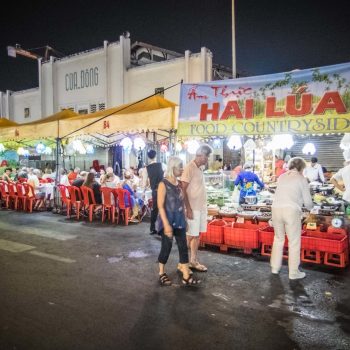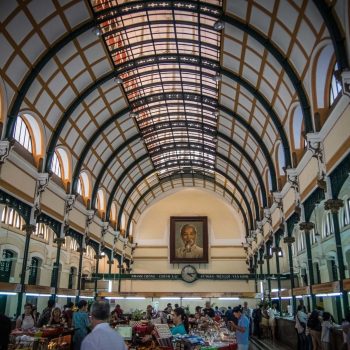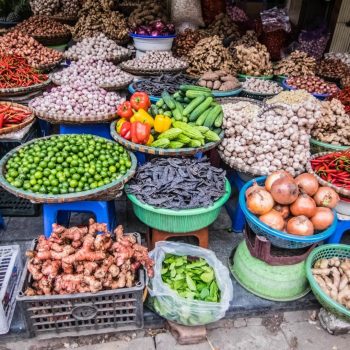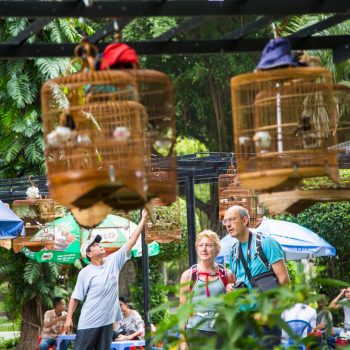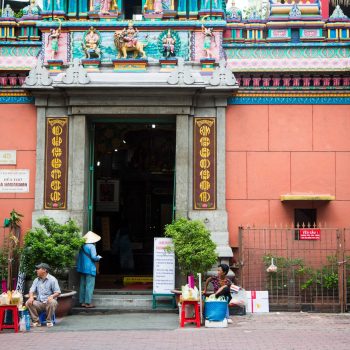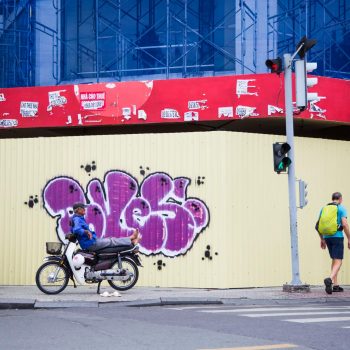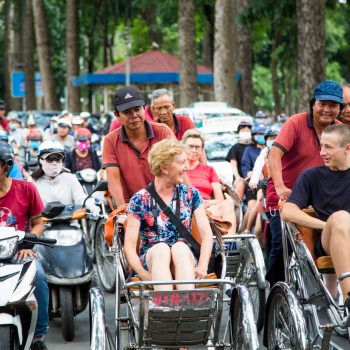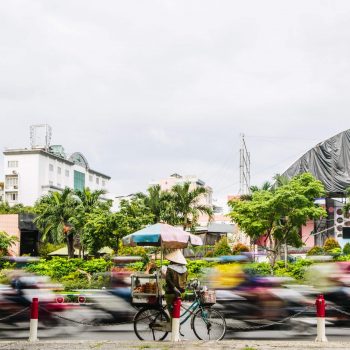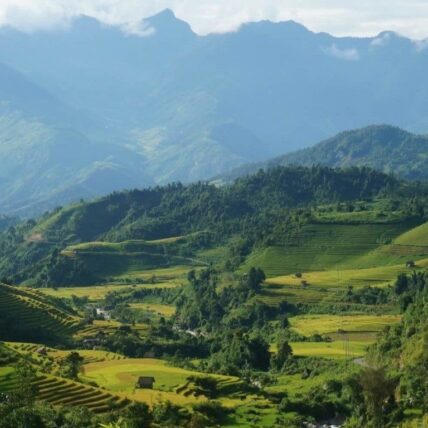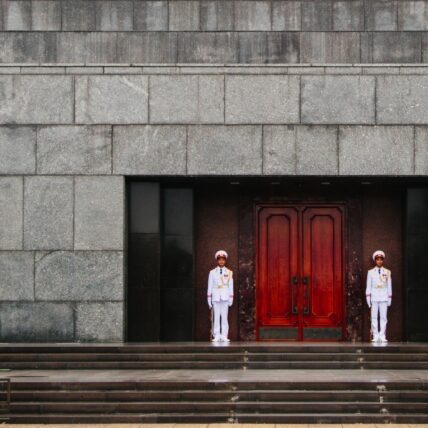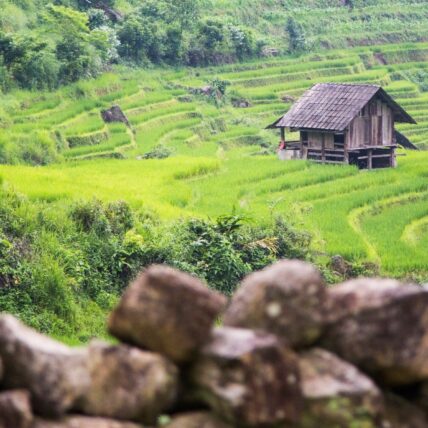SAIGON GUIDE
8 places to discover in Ho Chi Minh City
Ho Chi Minh City or Saigon as the city was formerly named (and still is among many locals) is the largest city in Vietnam with more than 10 million inhabitants. Ho Chi Minh City is also Vietnam’s economic powerhouse and has developed rapidly since the Vietnam War ended in 1975.
Explore the Chu Chi tunnels
Chu Chi tunnels are part of a massive war museum outside Ho Chi Minh, offering visitors a sneak peek into the underground life of the Vietnamese soldiers, dating back to 1948. The site has over 120 km of underground tunnels, traps, living areas, kitchens, storage facilities, arsenals hospitals and command centers. After the war against the French, the Vietnamese soldiers extended the tunnel systems and implemented air filtration systems that helped them survive the Chu Chi carpet bombings in the war against the Americans. The Chu Chi tunnels, located 70 km outside Ho Chi Minh City, are one of the city’s most iconic attractions . You have the opportunity to enjoy a lot of activities during your visit. A popular option is to follow the narrow routes in the underground tunnels. Visitors often watch a short film prior tot he visit, to understand how the tunnel system works. A visit to the Chu Chi tunnels is definitely worth a visit for those who want to explore Vietnam’s war history and learn more about their cunning tricks to overcome both the French and the Americans.
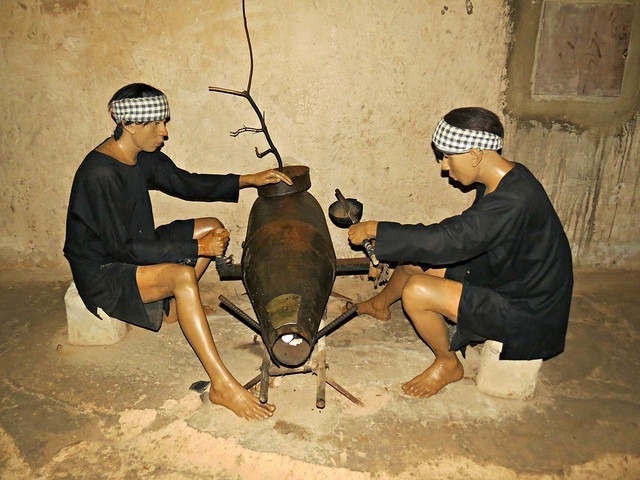
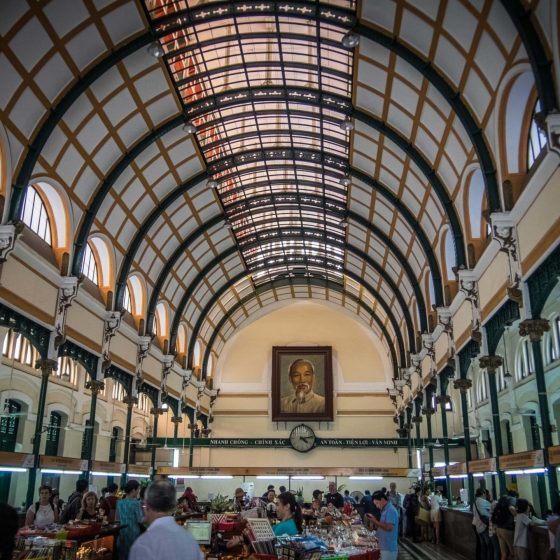
French colonial atmosphere in Ho Chi Minh City
The central post office in Ho Chi Minh City is a beautifully preserved relic of French colonial times, and perhaps the largest post office in Southeast Asia. The post office is located next to the Notre Dame Cathedral and the two cultural sights can hence be visited at the same time. Visitors get a chance to imagine life in Vietnam, during the French colonial empire in Southeast Asia. The building has arched windows and wooden shutters like it would have had in its thriving late 19th century. When you step into the old colonial post office, the happiness arches, the specially designed marble floors and the antique telephone booths will remind you of how important the post office was in a time before mobile phones and e-mail. Although the architecture is distinctly French, a majestic portrait of Ho Chi Minh hangs everything to remind visitors that we are still in Vietnam.
Experience the street kitchens of Ho Chi Minh City
Ho Chi Minh City’s street kitchens gather countless regional specialities from all over Vietnam. Local Vietnamese people love to gather around bulging metal tables all over the city to enjoy amazing meals along the street. The possibilities are numerous, but you should not avoid highlights like Vietnamese sandwiches (Bánh mi), spicy pancakes from the south (Bánh xèo) and broken rice (co’m tàm). It is often an incredibly cheap way to eat, but also an excellent way to taste real local food. In addition, you experience close up how the Vietnamese people socialize with each other.
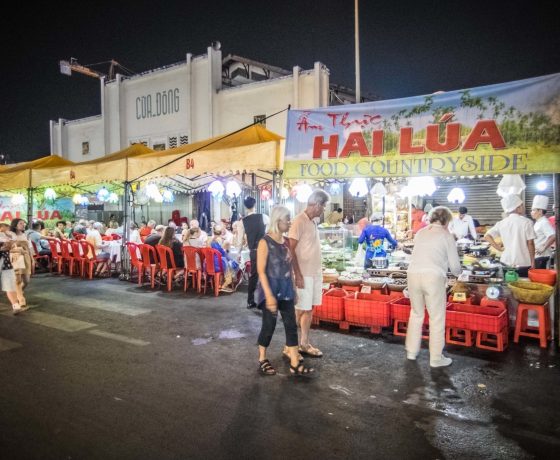
Explore the Binh Tay market
The Binh Tay market, built by the French in the 1880s, is located in the center of Vietnam’s largest Chinatown district. Unlike the Ben Thanh Market in District 1, this market mainly serves the locals, with its extensive selection of fresh fruits, vegetables, poultry, meat and seafood from regions across Vietnam. The market unfolds in a two-storey building along the Tha Moui street. Travelers can also find a selection of handicrafts, paintwork and textiles sold in large quantities. The Binh Tay market is an excellent way to experience the local life and to sample exciting delicacies.
Emperor Jade Pagoda in Ho Chi Minh
The Emporer Jade Pagoda, also known as the Tortoise Pagoda, is one of the five most important shrines in Ho Chi Minh City. Built in the early 20th century by a Cantonese community that migrated from the Guangzhou province in southwestern China, this pagoda acts as a fine representation of the Mahayanist branch of Buddhism widely practiced in Vietnam. The Emporer Jade Pagoda is a living and working sanctuary used extensively by the locals who come here to pray or make ritual sacrifices of flowers, candles, and incense sticks. With worshipers coming and going, the temple can be quite busy and therefore feel a little cramped. But the dimly lit narrow passages filled with incense smoke provide an authentic atmosphere that gives visitors a taste of the eastern mystery.
Independence Palace in Ho Chi Minh City
The Palace of Independence, also known as the Reunification Palace, is an exciting attraction for history lovers, as well as tourists who want to learn more about Vietnam’s history. This is the site of the famous images of tanks crashing through the gates of Saigon’s fall in 1975. If you enter this impressive building, you almost feel like you went back in time. You can see where the southern Vietnamese government controlled the execution detachment of the Vietnam war – even the bomb bunkers in the basement where the maps are still hanging on the walls.
The Palace of Independence in Ho Chi Minh City is yet another opportunity to familiarize yourself with Vietnam’s history, and also another proof of the Vietnam war’s great impact on Vietnam as a nation.
Ho Chi Minh City Opera House
If you continue walking along the Dong Khoi street, you will reach the historic Opera House in Ho Chi Minh City. You do not want to miss Vietnam’s own edition of “Cirque du Soleil”. The A O show is a spectacular performance that celebrates Vietnamese roots and shows the development of contemporary cities in one outstanding show. So grab the opportunity and visit the Opera House in Ho Chi Minh City and enjoy an evening of theatrical art. See a mix of contemporary dances, acrobats, bamboo work, while South Vietnamese songs resonate in the beautifully decorated hall. You will be impressed by the fascinating performance that highlights the best of both old and new Vietnam.
Vespa tour in Ho Chi Minh City
When you want to feel the big city’s true character in Vietnam, it does not happen in a bus or by car but on a motorcycle / scooter. Experience the city’s hustle and bustle in Ho Chi Minh City on a retro Vespa scooter and suddenly you will feel united with the Vietnamese fleets of scooters that fill the city streets day and night. There are many options once you are comfortable with your Vespa. Whether you want to visit the city’s many micro-breweries on a beer tasting tour, experience the city’s hidden corners early in the day or just escape the bustle of the city and explore the nearby Mekong delta, the list of options is vast. A Vespa tour is an excellent way to experience the many sides of Ho Chi Minh City.

